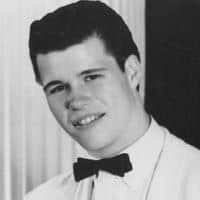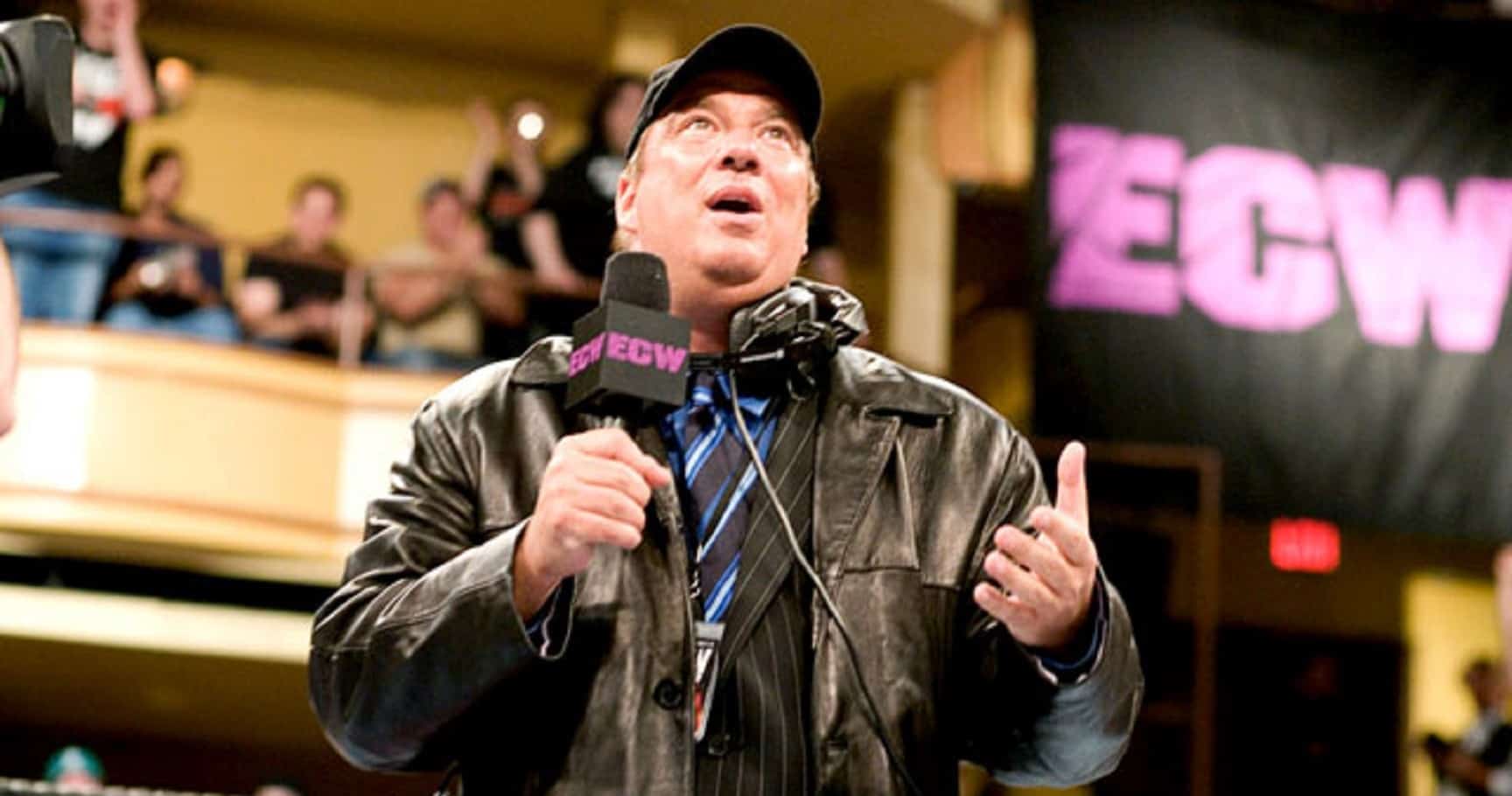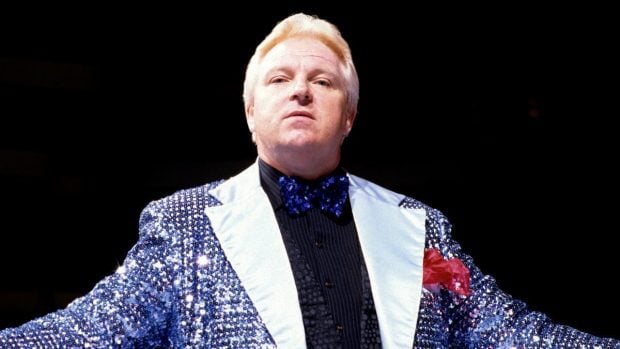Professional wrestling managers have been around for a long time. Some of them were legitimately managers for their clients, handling their bookings, travel, and other associated business details.
Ed “Strangler” Lewis, a legendary wrestler himself, managed former NWA world champion Lou Thesz for many years and took a percentage of Thesz’s earnings as champion. Paul Ellering did the same thing for the Road Warriors. He handled travel and lodging arrangements and even negotiated their contracts.
But wrestling managers of the other kind are a bit better known: The flamboyant personality standing ringside, advising and – occasionally – giving a little bit of underhanded assistance to his client.
Some of the best performers in the business haven’t been wrestlers: They’ve been the guys at ringside, getting heat.
While not all of your beloved favorites may be listed below, the following wrestling managers deserve a bit of our love by making professional wrestling exceptionally better by being a part of it.
Gary Hart

Quick Tip for Facebook Readers
Many of our readers connect with our content through our Facebook page. However, Meta's built-in browser (which opens by default on mobile) occasionally freezes mid-article- a known issue unrelated to our site. To enjoy uninterrupted reading: Tap the three dots in the top right corner → Select 'Open in external browser.' This will resolve the glitch. Thanks for your support. We want your wrestling stories to stay as smooth as a top-rope hurricanrana!
This man’s contributions to the wrestling business can’t go unnoticed. The “Playboy” Gary Hart from Chicago wrestled, managed, booked talent, wrote TV, and did everything else in the business.
He was one of the great young stars by the time a plane crashed into Tampa Bay, killing “The King” Bobby Shane and severely injuring Buddy Colt, Mike McCord (better known these days as Austin Idol), and Hart.
In Hart’s book, he talks about rescuing Colt and Idol, despite brutal injuries to his own body. But better times in the business were ahead for Hart.
He spearheaded the push of The Freebirds into World Class, which set the promotion on fire for a while in the early 1980s, managed The Spoiler in Australia, The Great Kabuki, and The Great Muta, and worked with Ric Flair and Hiro Matsuda as part of the J-Tex Corporation. Hart is little remembered these days, but his work in front of the camera and behind it should be remembered.
J.J. Dillon

James J. Dillon was a solid if unspectacular, mid-card wrestler who found his niche behind a microphone, shilling for other talent. He was a terrific talker, a guy who could look and sound like a million bucks but still ooze sleaze. Think of Dillon as the precursor to Breaking Bad’s Saul Goodman.
Dillon managed a stable of wrestlers going after Dusty Rhodes in Florida, and when the American Dream took over the book for Jim Crockett Promotions, he brought in Dillon as one of his main adversaries.
Pretty soon, J.J. was managing diverse talents like Tully Blanchard and Buddy Landel.
Eventually, Dillon became the manager–sometimes “executive consultant”–for the Four Horsemen, who ran roughshod over Jim Crockett promotions in the mid-to-late-1980s.
Dillon also had a sharp mind for the business, working in creative for WCW and WWE, and in the late 1990s, he often worked in front of the cameras for WCW as an on-air authority figure.
He did literally everything in the wrestling business. Dillon is also a member of the WWE Hall of Fame as a member of the Four Horsemen.
“Sheik” Adnan Al-Kaissie

After a stellar wrestling career as “Billy White Wolf,” a supposedly Native American grappler, Adnan Bin Abdul Kareem Ahmed Alkaissy El Farthie began working as “Sheikh” Adnan Al-Kaissie in Verne Gagne’s AWA.
Al-Kaissie’s gimmick was a sort of an Arab Million Dollar Man. In kayfabe terms, he offered enough money to buy the greatest wrestling talent, securing the services of Ken Patera, whose contract was “sold” by Bobby “The Brain” Heenan and Jerry Blackwell.
Al-Kaissie was also a legitimate grappler, having wrestled at Oklahoma State University (the school produced other greats like former NWA world heavyweight champions Jack Brisco and Dick Hutton, Jerry Brisco, Leroy McGuirk). Al-Kaissie was a master at getting heat from the Midwestern fans of the AWA.
In 1990, he donned the guise of “General Adnan” in the WWE. He and the Iron Sheik–then going by the name “Colonel Mustafa”–joined forces with an old foe, Sergeant Slaughter, to take the WWE world championship from the Ultimate Warrior.
Al-Kaissie headlined SummerSlam 1991 with Slaughter and the Iron Sheik to take on Hulk Hogan and the Warrior.
He stayed with the WWE until after the 1992 Royal Rumble.
Paul Bearer
William Moody was a hell of a talent. First as Percival Pringle III, in the Mobile, Alabama-based WOW, then in Florida Championship Wrestling, where he managed talent like “Ravishing” Rick Rude to the Southern heavyweight title.

Moody cut his teeth in smaller promotions for several years, like the sinking World Class promotion in Dallas, where he managed a stable of top heels against the Von Erichs, and even engaged in a one-on-one feud with the youngest of the Von Erich brothers, Chris.
Moody got put into the spot against Chris because he worked so light and so safe that he would naturally take care of the most injury-prone of the Von Erichs. While he was working in these smaller territories, he was also building a reputation as a consummate professional.

When the WWE introduced The Undertaker to audiences in 1990, Brother Love was his original manager, but Paul Bearer was soon on the scene, and the pair were inseparable for years.
Like Jimmy Hart, William Moody was simply a first-class guy and beloved by his peers.
Bobby Davis

A lot of readers are asking themselves “Who?” at this point, but if you enjoy the antics of wrestling managers in general, Bobby Davis pretty much set the role for everyone who would come after him.
The Ohio native wrestled for a few years before a neck injury took him out of the ring, mostly for good. But Davis managed “Nature Boy” Buddy Rogers at the height of Rogers’ career as NWA world champion, working with him as he won the title in 1961 and again in 1962.
A year later, Davis expanded his stable while working for Vincent J. McMahon (you might have heard of his son, Vincent Kennedy McMahon) for the World Wide Wrestling Federation.
Davis managed the biggest stars in the territory, including Johnny Valentine, Dr. Bill Miller, the Grahams, and Johnny Barend.
His fame was such that when Dick the Bruiser recruited Raymond Heenan as a manager in the Indianapolis-based WWA, he christened him “Bobby” … and Bobby Heenan was born. Bobby Davis was the original.
“The Mouth of the South” Jimmy Hart

Even if Jimmy Hart had never set foot in a WWE ring, his work in Memphis ensures he would make the greatest wrestling managers list.
Not only was he the manager for the first iteration of the Hart Foundation in the WWE (Bret Hart and Jim Neidhart), Hart spent years tormenting (and being tormented by) Jerry “The King” Lawler, even going so far as to hook up with TV star Andy Kaufman.
He truly was the “Mouth of the South,” cutting great, annoying promos on the babyfaces while extolling the virtues of his proteges.
While Jim Cornette was learning the ropes in Memphis, he had to play second fiddle to Hart, because of how established Hart’s First Family was. When your managerial work outshines Jim Cornette, you’ve accomplished something.
Hart was also multi-talented, using his musical roots (he was a member of the 1960s rock-and-roll group, The Gentrys) to create entrance music for various wrestlers over the years.
It should also be noted that Hart is one of the genuinely nice guys in the business. (If Jimmy hasn’t called you ‘Poo-Poo’ at least once, it’s tough to justify that you’re actually in the wrestling business.)
“Classy” Freddie Blassie

Freddie Blassie had a long, illustrious career in the ring as a championship wrestler. He was a perennial champion in the California version of the WWA, as well as making successful tours in the Georgia territory.
As one of the first gaijin to regularly tour Japan, Blassie’s antics actually caused several fans to have heart attacks. A couple of them were fatal, too.
By the time he got to the WWF as a performer, he was well into middle age. He managed the Iron Sheik to a brief world title run. When the Sheik dropped the title to Hulk Hogan, Blassie was there.
He led Sheik and Nikolai Volkoff to multiple tag team title reigns, too.
Blassie’s work was always great, and he dropped new terms into the everyday lexicon of wrestling fans everywhere–stuff like “Pencil-necked geek” and “the fashion plate of professional wrestling.”
In his retirement, Blassie became sort of an elder statesman to wrestlers and wrestling fans alike. Classy Freddie Blassie was one of a kind.
The Grand Wizard

Ernie Roth was a kind of low-key badass of wrestling managers, although he would likely have laughed at the term being applied to him.
He began working in the Detroit territory as Abdullah Farouk, the manager for the original Sheik.
While The Sheik had other wrestling managers, like Eddie Creatchman or “SuperMouth” Dave Drason, Roth was defining the character he’d take to the WWF later on.
In Detroit, Roth wore wraparound shades, loud jackets, and a fez. In New York, he traded in the fez for a turban and became the Grand Wizard of Wrestling, managing one of the most successful acts in the 1970s- Superstar Billy Graham. And while the Superstar didn’t exactly need a mouthpiece, Roth could help the heel champion at ringside.
(One of the truisms about the wrestling business: Ringside wrestling managers enable workers to do more types of finishes without having a clean finish, which would get people to come back to see the return bout.)
But even though Roth was terrific in his role as the sidekick for Graham, it’s real life that places him so high on this list. Outside of wrestling, Ernie Roth was a gay, Jewish man. He named his WWF/E character as a shot at the KKK’s ‘grand wizard.’ That takes some guts.
Paul Heyman

The ‘psycho yuppie’ makes the list for a couple of reasons. No. 1, he was an outsider to the business in the 1980s when he first broke in, and that was a notoriously hard thing to do at the time.
As a fan trying to break in, Heyman sneaked into a booking meeting with “The American Dream” Dusty Rhodes and charmed his way into sitting under the Dream’s learning tree – even if only for a little while.
First working as Paul E. Dangerously in the Southern territories, he worked main-event programs with “The Universal Heartthrob” Austin Idol and Tommy “Wildfire” Rich in Memphis and formed the first iteration of the Dangerous Alliance in Continental with Eddie Gilbert.
He led the “Original” Midnight Express–Dennis Condrey and Randy Rose–to the AWA world tag team titles and into a hot feud with Cornette’s better-known Midnights in Jim Crockett Promotions.
In addition to his past success, Heyman now works as the “agent” to WWE’s top champions. That’s a heck of a pedigree.
On Bruce Prichard’s podcast, the former Brother Love has said that Paul Heyman is just a sophisticated Jim Cornette.
But Cornette gets placed above Heyman on the basis of his victory in their ‘Tuxedo match’ at the 1989 Great American Bash. (And also because Heenan publicly referred to Cornette as “the greatest manager in the history of wrestling” during an early broadcast of Monday Night Raw).
Jim Cornette

Jim Cornette was born to be a manager. With a gift of gab and a high-pitched voice that he exaggerated to play a stereotypical “mama’s boy” in the 1980s territory system, Cornette burst onto the scene in … OK, fine. He didn’t burst onto the scene. Instead, wrestling’s Louisville Lip sort of snuck up on everyone, debuting in the Memphis territory as an understudy to the already-established Jimmy Hart.
Cornette broke out as a star when he went to Bill Watts’ Mid-South territory as the manager for The Midnight Express.
From there, the Midnights had a short stint in World Class before moving on to Jim Crockett Promotions, where he would manage his clients to multiple world tag title runs.
During the 1990s, Cornette did double duty by running his own promotion, Smoky Mountain Wrestling, while simultaneously being the “American representative” of WWF world champion Yokozuna.
He also launched Ohio Valley Wrestling along with “Nightmare” Danny Davis, booked for Ring of Honor, and appeared as an on-air talent for TNA/Impact.
There are a lot of newer fans out there who say Jim Cornette has lost touch with what makes the wrestling business work, but he made money for more than 30 years in the wrestling business, and if you listen to his podcast, you understand why.
Bobby “The Brain” Heenan

This one is easy. Bobby Heenan was the gold standard when it came to wrestling managers. With his quick wit and the range to play the sniveling coward or the vicious mastermind, Heenan could do it all from ringside.
His promos were top-notch, and when fans watched Heenan at ringside, they saw an artist at work.
When his client took a beating, Heenan sold it, too. His head would snap back, blonde hair whipping around. He added to every program in which he was booked.
He managed top acts in Dick the Bruiser’s WWA, the AWA, and the WWF/E, including AWA World Champion Nick Bockwinkel, Andre the Giant, and Ray ‘The Crippler’ Stevens before moving on to the broadcast booth for WWE and WCW.
When it comes to wrestling managers, it doesn’t get any better than him.
Each of the above wrestling managers was responsible for so many entertaining moments and made professional wrestling better by being a part of it.
These stories may also interest you:
- Bobby Heenan and Nick Bockwinkel Incident in Chicago
- The Great Kabuki and Gary Hart: Their Fearful and Timeless Partnership
- Bruno Sammartino and Freddie Blassie: Too Real for the Mob
Can’t get enough pro wrestling history in your life? Sign up to unlock ten pro wrestling stories curated uniquely for YOU, plus subscriber-exclusive content. A special gift from us awaits after signing up!
Want More? Choose another story!
Be sure to follow us on Facebook, X/Twitter, Instagram, Threads, YouTube, TikTok, and Flipboard!

"Evan Ginzburg’s stories are a love letter to wrestling, filled with heart, humor, and history. A must-read for any true fan." — Keith Elliot Greenberg
Wrestling Rings, Blackboards, and Movie Sets is the latest book from Pro Wrestling Stories Senior Editor Evan Ginzburg. 100 unforgettable stories—from sharing a flight on 9/11 with a WWE Hall of Famer to untold moments in wrestling history. A page-turner for fans of the ring and beyond. Grab your copy today! For signed editions, click here.
"Evan Ginzburg’s stories are a love letter to wrestling, filled with heart, humor, and history. A must-read for any true fan." — Keith Elliot Greenberg
Wrestling Rings, Blackboards, and Movie Sets is the latest book from Pro Wrestling Stories Senior Editor Evan Ginzburg. 100 unforgettable stories—from sharing a flight on 9/11 with a WWE Hall of Famer to untold moments in wrestling history. A page-turner for fans of the ring and beyond. Grab your copy today! For signed editions, click here.
Pro Wrestling Stories is committed to accurate, unbiased wrestling content rigorously fact-checked and verified by our team of researchers and editors. Any inaccuracies are quickly corrected, with updates timestamped in the article's byline header.
Got a correction, tip, or story idea for Pro Wrestling Stories? Contact us! Learn about our editorial standards here. Ever wanted to learn more about the people behind Pro Wrestling Stories? Meet our team of authors!
ProWrestlingStories.com participates in affiliate marketing programs. This post may contain affiliate links, meaning we may earn commissions at no extra cost to our readers. This supports our mission to deliver free content for you to enjoy!














